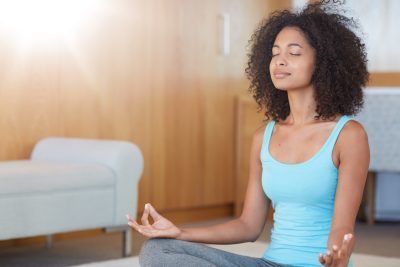AUTHOR // CCA Staff Team
Mindfulness; it’s become a popular topic for mental health and well-being, but what does it actually mean, and where does it come from? Mindfulness, a form of meditation, has its roots in Buddhism. It is one group of many meditation techniques that originated in Eastern religious or spiritual traditions. Today, it is often practised to help with stress reduction.
Most commonly, mindfulness meditation is used to help modify a person’s response to stress. A growing body of research shows that the practice is effective in reducing stress and improving mood, and may even help to improve cognition in older adults. It has also been shown to improve anxiety, sleep disturbances, stress, and chronic pain.
There are a few other reasons why mindfulness meditation is gaining in popularity: it involves low physical and emotional risk, is easy to implement, is not expensive, and it has the potential to empower people to be more actively engaged in their mental health.
Many mindfulness exercises involve practising just that—being mindful. It involves focusing on breath, posture, and the space you occupy at the present moment. Often, even just adding a few minutes of meditation to your routine per day can make a big difference in your overall sense of mental well-being. Here are some tips to help add meditation to your daily routine:
- Choose a time. Morning is a calm time in many people’s days, but choose what’s easiest for you and stick to it.
- Choose a place. Consistency of space can be helpful to ground your practice. Preferably choose a place that’s quiet and where you can sit quietly and relax for a few minutes each day.
- Choose a duration. It’s good to decide before you start how long you’re committed to. Start with five minutes, and slowly build upon it.
- Set an intention. At the beginning of each meditation, remind yourself why you are meditating that day.
- Set your posture. This is about more than spinal health: having a healthy posture increases alertness in your meditation, and it helps keep you focused. (There are more posture tips below.)
- Breathe from the belly. Take a few deep inhales, and a few deep exhales, allowing your body to unwind. As you breathe out, focus on relaxing different muscles and areas of the body with each breath, moving in one direction up (or down) the body.
- Choose an object of attention. Not necessarily a physical object, but a point of focus, such as the breath as it flows in and out of the nostrils, or the chest, as it rises and falls with each breath. With a relaxed body and an open posture, this keeps your meditation focused on the present.
Remember, concentration involves placing your attention on one thing or in one place. Mindfulness is noticing everything in its purest form, moment-to-moment. Neither of these things come easily. Meditation is a practice, not just an activity, so it takes time to develop it as a skill unto itself.
Here are a few tips for setting your posture: try sitting on a chair or cushion. When you first start each meditation, it’s best to find back support in a chair or sit with your back against a wall to maintain a straight-back position. In this position, let the rest of your body hang freely. You can rest your hands on your knees or lap. When you let your eyes close, you allow yourself to bring the attention inward to the body, and to the present moment.
If you’re able to sit a little bit each day and be mindful of the present moment, not only will you experience noticeable benefits like the ones listed above, the practice will become easier. Commit to what’s possible for you, and stick with it. Happy meditating!
References
- Horowitz S. Health Benefits of Meditation: What the Newest Research Shows. Alternative and Complementary Therapies. 2010; 16(4): 223-8. doi:10.1089/act.2010.16402.
- Morone N, Greco C, Weiner D. Mindfulness meditation for the treatment of chronic low back pain in older adults: A randomized controlled pilot study. Pain. 2008; 134(3): 310-9. doi:10.1016/j.pain.2007.04.038.
- How to Meditate | New York Insight Meditation Center. Nyimcorg. 2016. Available at: https://www.nyimc.org/how-to-meditate/. Accessed November 4, 2016.


